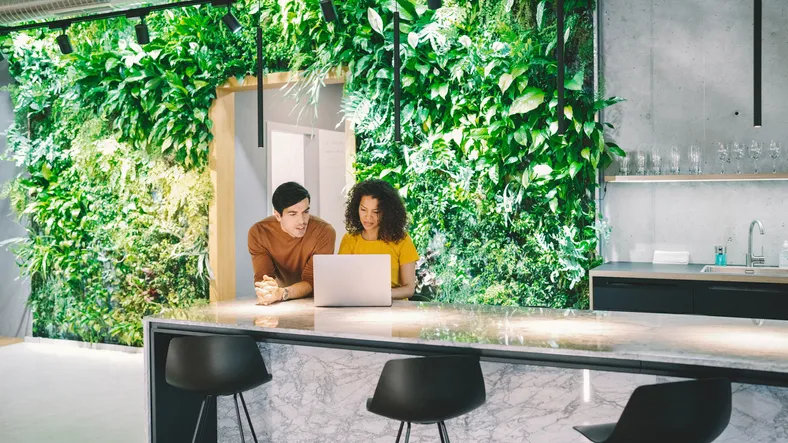April 18 2024
Improving Indoor Air Quality with Passive Type Live Green Walls
In urban environments, where outdoor air pollution and indoor air quality are growing concerns, the integration of green infrastructure within buildings is gaining attention. One innovative approach to enhancing indoor environments is the implementation of passive type live green walls. This article explores how these living systems can significantly improve indoor air quality, providing a healthier environment for occupants.
What is a Passive Type Live Green Wall?
A passive type of live green wall, also known as a biofiltration wall or bio wall, consists of a vertical installation of plants integrated into the indoor spaces of buildings. Unlike active green walls, which use forced ventilation to draw air through the plant medium, passive green walls rely on natural processes — the passive movement of air through the wall’s plant and soil layers — to filter indoor air.
Benefits of Passive Type Live Green Walls
Natural Air Filtration
The primary mechanism through which passive green walls improve air quality is through the natural process of phytoremediation. Plants absorb common indoor pollutants such as benzene, formaldehyde, and trichloroethylene through their leaves and roots. A study published in the Journal of Environmental Horticulture (2014) demonstrated that certain indoor plants could reduce volatile organic compound (VOC) concentrations by up to 80% within a 12-hour period.
Humidity Regulation
Plants naturally transpire water as part of their physiological processes, which can help regulate indoor humidity levels. Maintaining appropriate humidity is crucial for human comfort and health, reducing the risk of respiratory disorders and inhibiting the growth of mould and dust mites. According to research by the University of Technology, Sydney, indoor plants can significantly increase relative humidity in dry indoor environments.
Psychological Benefits
While not directly linked to air quality, the presence of green walls can also enhance mental well-being, reducing stress and increasing productivity. This psychological uplift can indirectly promote a healthier indoor environment by improving occupants' interactions and care for their surroundings.
Energy Efficiency
Passive green walls provide natural insulation and cooling effects. During the summer, the evapotranspiration from the plants can cool the surrounding air, reducing the need for air conditioning. In winter, the additional layer of plants and soil provides insulation, potentially lowering heating costs.
Implementation and Maintenance
Implementing a passive green wall involves considerations of design, plant selection, and maintenance. The success of a green wall in improving air quality depends significantly on choosing the right types of plants that are effective at absorbing the specific pollutants present in the indoor environment. Furthermore, regular maintenance, such as watering, pruning, and health monitoring of the plants, is essential to ensure the wall remains effective and attractive.
Conclusion
Passive type live green walls offer a sustainable and effective solution to improving indoor air quality. By harnessing the natural processes of plants, these installations help filter pollutants, regulate humidity, and enhance the overall indoor environment. As research continues and technology in biofiltration advances, passive green walls may become a staple in green building practices, aligning architectural design with environmental sustainability.

 +971 52 38 444 52
+971 52 38 444 52



